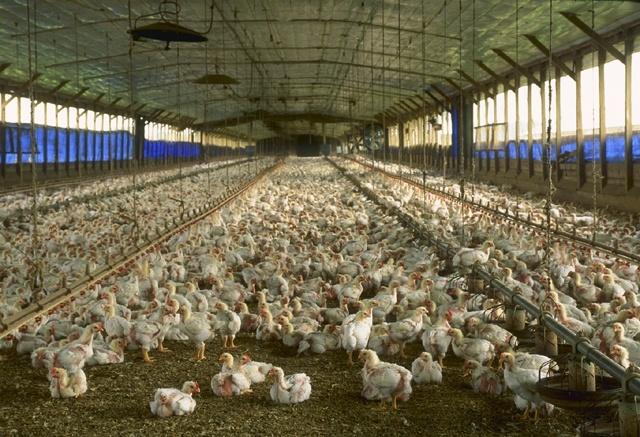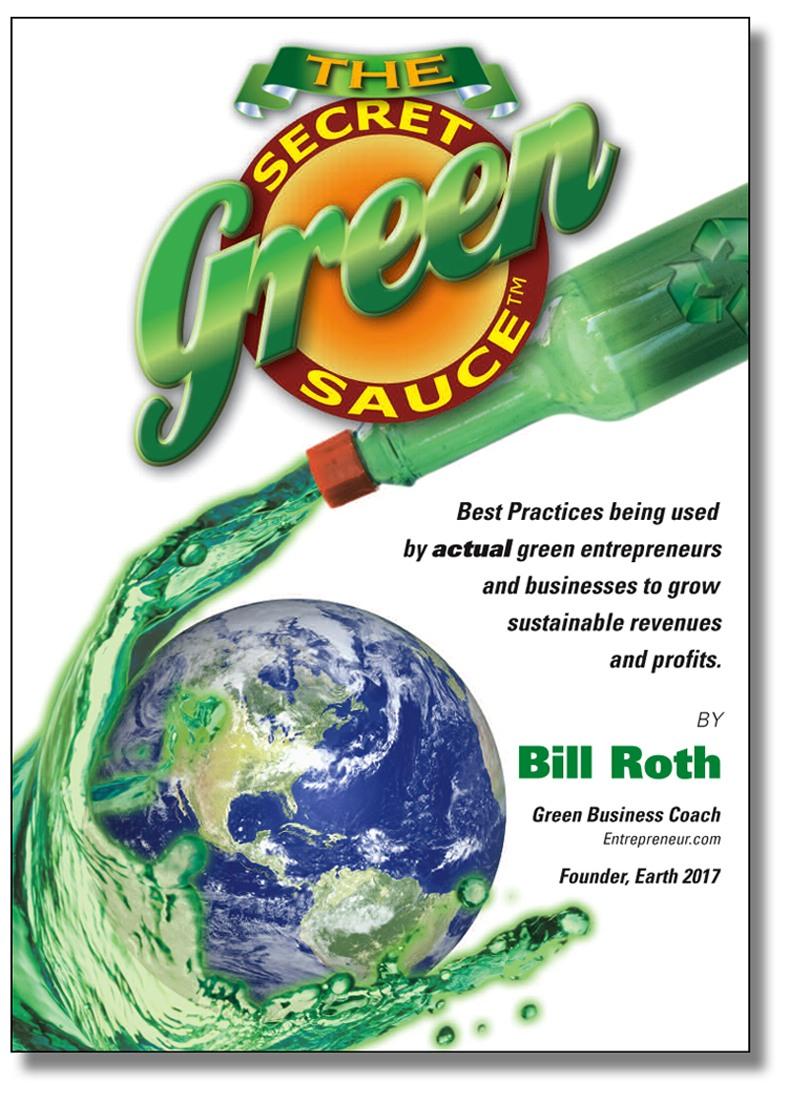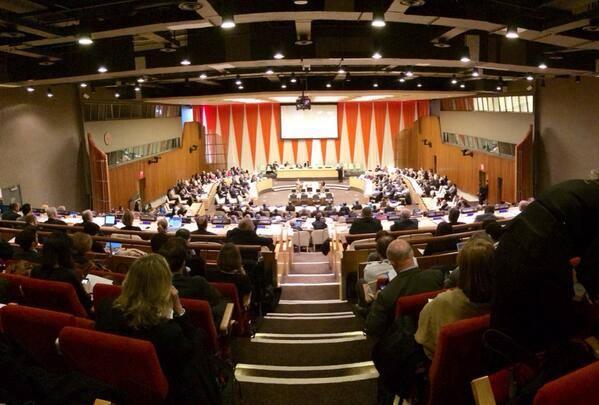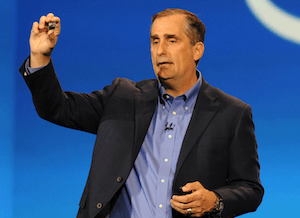Organizations Call on Foster Farms to Come Clean on Antibiotic Use


Last October we reported on the Foster Farms samonella outbreak that was sickening hundreds of people across the country. A particularly virulent strain of drug-resistant salmonella, S. Heidelberg, had been found in several batches of its product, causing recalls in numerous states. As many as one-third of the consumers who were diagnosed with salmonella were hospitalized. Cases are still being identified.
On Jan. 13, a consortium of 30 consumer, animal welfare and environmental organizations stepped forward to urge Foster Farms to report on the antibiotics that are being used in its factories. The group has drafted a letter calling on the company to:
- Publish a detailed description of the antibiotics the company uses to raise chickens;
- Commit to using antibiotics responsibly.
- Verify progress through audits by an impartial third party.
The organizations, which include the National Resources Defense Council, Center on Race, Poverty and the Environment, Consumers Union, the American Society for the Prevention of Cruelty to Animals, Physicians for Social Responsibility and many others have also urged Foster Farms to reserve antibiotics for "treating sick animals, or in rare cases, to control disease outbreaks," stating that "they should not be used for routine disease prevention or growth promotion." It also has appealed to Foster Farms to step up its improvements to its husbandry and living conditions, noting that doing so "can reduce or eliminate the need for non-therapeutic use of antibiotics. Medically important antibiotics should only be used for treating sick animals."
The NRDC maintains that the factory conditions may be a key reason why Foster Farms continues to experience the increased need for antibiotics. In turn, drug resistance is becoming more prevalent in the poultry and making it harder to treat outbreaks.
"More than 80 percent of all antibiotics sales in the United States are purchased for raising livestock," says the NRDC. "When antibiotics are used repeatedly to speed animal growth or prevent disease in crowded, unsanitary feedlots or barns, some bacteria survive, become drug resistant and spread. Drug resistant bacteria can lead to longer illnesses, more hospitalizations, the use of drugs with greater side effects, and treatment failure."
The Centers for Disease Control and Prevention estimate that at least half of the antibiotics that are used in animals "is unnecessary and inappropriate and makes everyone less safe."
Foster Farms has yet to respond to the letter. Earlier this month, inspectors found a large infestation of cockroaches and "egregious unsanitary conditions" in the Livingston, Calif. plant. The USDA ordered the plant temporarily closed for a thorough cleansing.
Image of chicken house courtesy of the USDA.
Winners and Losers in the Trillion Dollar Green Economic Revolution


In the six years since I published my initial research predicting a disruptive and distinctively green economic shift that I labeled the green economic revolution, the global sale of sustainable goods and services is measured in the trillions of dollars. The question is no longer whether a sustainable economy is developing. In 2014, the question is: Which companies will be the revenue growth winners?
20th century's Commodity Economy hits revenue growth wall
The 20th century commodity economy, built upon commoditizing products and people, has hit a revenue growth wall. The information age has now raised consumer awareness to levels in which they expect products to cost less and mean more. Customers expect “everyday low prices.” Armed with unprecedented awareness through information age technologies, they also expect products to be healthy and responsibly sourced. The commodity economy’s business best practice of slashing prices to ever-lower levels by avoiding or undervaluing externality costs like human obesity and climate change is losing customers and revenues to sustainable best practices that deliver both value and values.
There are three macro-economic “bricks” in the wall of revenue growth for unsustainable companies. The first is the unintended consequence of the 20th century’s business focus upon reducing the number and wages of employees. Ninety percent of U.S. consumers have not seen real wage growth over the last fifteen years. Because approximately 80 percent of the U.S. economy is consumer-driven, this lack of consumer income growth is starving our economy’s ability to grow.
The second driver is that consumers are now experiencing real financial pain tied to externalities - costs not reflected in “everyday low prices” and “dollar menu” items. Obesity and diabetes, and their increased health care costs, are a national crisis tied directly to promotional pricing of fast foods laced with sugar, sugar substitutes, fats and chemicals. Climate change tied to burning “lower cost” fossil fuels is now impacting consumer purchasing power.
For example, California is an agricultural super center supplying food to the U.S. and the world. This scale of agriculture accounts for 70 to 80 percent of California’s water use. Today’s unprecedented California drought, that weather models link to climate change, holds the potential of raising food prices for all Americans by this summer. The externality cost legacy of the 20th century commodity economy will be a significant cost burden through at least the first half of the 21st century -- retarding economic growth.
The third driver is that the commodity age is no longer delivering lower prices. For example, “drill baby drill” has generated historically high volumes of oil but it has not meaningfully reduced pump price pain. With their incomes stagnant, the more consumers must spend at the pump results in less money to buy other goods and services.
The business bottom line is that unsustainable business practices have hit a revenue wall. Businesses built upon a commodity economy will face eroding profit margins and stagnant revenue growth.
The growing sustainable economy
What is selling are price-competitive “in me, on me and around me” solutions. Led by the millennial generation and moms, consumers are buying solutions that save money, improve human health and are sourced responsibly.
The emergence of a sustainable economy is a perfect storm of technology-enabled awareness and consumer pain. “We are all naked” was the astute observation of a Walmart executive reacting to the reality that every business practice is revealed via YouTube and social media. This executive also identified “get buff” as the 21st century business path to success. “Get buff” means that a business cannot rely on price competitiveness to win customers. A buff company is price competitive, but it also provides a solution to the consumer’s societal and environmental concerns.
This trend is being validated by evidence of the revenue winners and losers so far in 21st century. Digital, especially mobile, is the most obvious revenue winner. It is a huge solution for consumers and businesses searching for ways to do more with less (a core sustainable practice). Digital posts on sites like Care2 or TriplePundit are showing consumers that there are huge differences between products in terms of human health costs and benefits. While the digital space is the big 21st century revenue winner, advertising is the 21st century’s business loser. Consumers, led by the millennial generation, are streaming past advertising. Consumers look to one another through digital (and increasingly mobile) posts on product experiences in deciding what to buy and from whom.
Rooftop solar is emerging as another 21st century revenue winner. Solar has doubled its customer based in just two years. Electric utilities appear poised to be a huge 21st century business loser from consumers adopting solar, LED lights and Nest thermostats as solutions to continued utility rate increases and climate-changing emissions. It is only a question of when a cost-effective combination of rooftop solar and on-site battery technologies enable customers to reduce their costs and emissions by living and working in Zero Net Energy buildings.
The 21st century will be defined by healthier diets. Companies like Chipotle, which brands itself based upon its sustainable sourcing of food, and Panera Bread, which brands itself on its healthier menu, are winning customers and revenue growth. Farmers markets selling local and fresh food are revenue winners. Fast food chains like McDonald's have hit the revenue wall in the 21st century. Their mixed messaging, conflicted menu offerings of “healthy” and “unhealthy” food items, plus their industrial-food roots, are not engaging the crucial consumer market segments of millennials and moms.
The economic war between unsustainable and sustainable companies
Conflicted is the best way to describe my forecast for the 2014 economy. This conflict comes from the political friction and price competition between entrenched unsustainable businesses and the attempts by more sustainable businesses to win customers. The manifestation of this economic conflict will be heightened volatility in stock prices as the battle for customers seesaws between competing businesses. Volatility will also come from government policies that attempt to fuel economic growth without addressing core sustainability issues.
Conflict will also be manifested within businesses. Chief financial officers, under pressure to achieve 90-day financial results, will continue to focus on the commodity age success strategy of maintaining stock values through cost-cutting -- achieved by reducing labor and operating costs without a focus upon societal or environmental impacts. Pushing back against the CFO will be marketing departments that see revenue growth opportunities from reshaping products that align with the consumer’s search for “in me, on me and around me” solutions. Push-back will also come from operations that seek to implement lean manufacturing and green supply chain best practices that reduce costs by reducing waste streams and emissions.
Our economy will continued to be conflicted due to the commodity age’s legacy income disparity. The scale of our current income disparity was last seen at the start of the 1930s Great Recession. A sustainable economy enables a broader distribution of income. This broader distribution of income, most especially when debt financing is also available to a broader number of people, enables sustained consumer spending. This is critically important to the U.S. economy -- where 80 percent of its economic activity is consumer driven.
Earth in 2017
The green economic revolution will reach an epoch in 2017, when the millennial generation displaces the boomer generation as the largest economic group in America. Sustainably solving problems is emerging as the path toward revenue growth -- driven by the millennial generation’s pursuit of lives that are “cool with a purpose.” While 2014 will be another year of conflict between entrenched unsustainable business practices and emerging sustainable business practices, there is no longer any question on how this economic revolution will end. The only remaining question is whether or not your business will be a revenue winner by aligning with the consumers’ quest for price competitive “in me, on me and around me” solutions.
Image credit: "The Secret Green Sauce" by Bill Roth
Bill Roth is an economist and the Founder of Earth 2017. He coaches business owners and leaders on proven best practices in pricing, marketing and operations that make money and create a positive difference. His book, The Secret Green Sauce, profiles business case studies of pioneering best practices that are proven to win customers and grow product revenues. Follow him on Twitter: @earth2017
Philadelphia to be National Model for Green Infrastructure


Back in 2012 we noted that Philadelphia was embarking on a landmark 25-year, $2 billion urban watershed project designed to transform its outdated stormwater management system into a national showcase for new green infrastructure. Now the city is ready for the next step, a newly announced $5 million urban watershed evaluation initiative that will use Philadelphia as the pilot area.
The whole project is fascinating for any number of reasons, but the overarching narrative is the transformation of urban areas from generators of waste and pollution into dynamic systems that return resources with little or no waste.
From a generator of waste and pollution...
As with the inititial $2 billion, the new funding comes from the U.S. Environmental Protection Agency, which has a formal partnership with Philadelphia's Green City, Clean Waters urban watershed initiative.
In terms of returning resources, the goal is to reduce or eliminate excess sewer outflows that occur during rainfall or snowmelt. Like most older cities, Philadelphia has an outdated sewer system that combines stormwater and sanitary waste. When wastewater treatment plants reach their capacity during precipitation, the combined sewer overflows are shunted directly into local waterways as a matter of longstanding practice, resulting in obvious consequences for water quality and pubic health.
...to a rainwater reclamation showcase.
Conventional infrastructure can address part of the problem, such as new holding tanks to keep excess wastewater until the weather dries out and treatment plant capacity is freed up. However, siting issues, expense and operating costs are often prohibitive.
That's where the new green urban watershed infrastructure comes in. The basic idea is to channel as much precipitation as possible into open ground, where soil and vegetation provide natural filtration.
As for where to find that open ground in a densely packed city, that is part of the challenge. Aside from city parks ,the initiative is also looking at school grounds and other public spaces for opportunities to build constructed wetlands. Replacing surfaces in parking lots with porous surfaces is another good option, and streetscapes may provide additional opportunities.
Evaluating the urban watershed
Clearly, replacing concrete with planted areas calls for a long-term commitment to maintenance, so part of the Philadelphia initiative involves testing different plants, soils and strategies to keep those costs to a minimum.
The new $5 million grant will help this effort along in partnership with the recipients, which are Villanova University, Swarthmore College, Temple University, University of New Hampshire and University of Pennsylvania.
The partners are tasked to evaluate long-term performance and identify early-term benefits, in addition to analyzing the economic success of the initiative.
Benefits of restoring the urban watershed
Aside from reclaiming rainwater and snowmelt, cities like Philadelphia can anticipate additional public health benefits from new green infrastructure.
Philadelphia Mayor Michael A. Nutter sums it up like this:
This forward thinking plan will not only result in better water quality for the city, but it will also provide a multitude of benefits for Philadelphians like cleaner air, revitalized green spaces and even new economic opportunity.
For a glimpse of what this can mean on a more modest scale, check out the urban watershed improvements planned for Bellemeade, a small community in Richmond, Va.
In a neat demonstration of the emerging dynamic between environmental protection, urban revitalization, education, public health and economic development, the Bellemeade project involves transforming a neglected and polluted creek into a multilayered community asset.
Image (altered): elPadawan
Follow me on Twitter.
MBA Students Promote Sustainability Through University Procurement


Several years ago, even before the Penn State Smeal MBA Program began to offer its official concentration in Sustainability and Social Innovation, there existed a marked student interest in learning more about sustainable business. To meet that interest, a group of MBA students—with my support as a faculty member in supply chain management—approached the university’s procurement services department to seek partnership on a real-world project.
The partnership our Penn State Smeal MBA Program forged with procurement services exemplifies an educational model that allows students to learn about sustainable procurement in a meaningful way while promoting university sustainability practices.
Why Procurement?
Procurement is a key driver of many sustainability strategies and integrates economic, environmental and social dimensions. It’s also a crucial aspect of an organization’s function. Aligning existing organizational goals with sustainability goals has become increasingly important, particularly with regard to supplier selection, as organizations become more conscious and proactive in addressing issues in sustainability.
Furthermore, procurement offers a wealth of opportunities in the university community because of the scale and importance of the function. Penn State is a large organization, with our University Park campus boasting more than 45,000 students and 15,000 employees. However, even smaller institutions must outfit and furnish countless dormitories, classrooms, office spaces and other facilities across any number of buildings.
The Case: Sourcing Janitorial Paper
In 2008, when the students approached procurement services about a possible partnership, the department was nearing the end of its janitorial paper products contract and was facing pressure from an environmental student action group to consider sustainability factors in vendor selection. Procurement services had agreed to investigate other options, but they had never before been tasked with the evaluation of suppliers in accordance with any significant sustainability standards. Thus, a project between MBA students and procurement services was born.
This project was offered as a practicum to students interested in sustainability. Throughout the 16-week practicum course, students first met with various stakeholders to gain a full understanding of each group’s points of view. Because they had little knowledge of the tissue paper industry, they also conducted background research to find out what kind of environmental certifications already existed. Finally, they developed a framework for comparing suppliers based on university needs, stakeholder requests and sustainability metrics.
The team derived a set of sustainability criteria, including both quantitative and qualitative measures, that allowed the comparable evaluation of suppliers using a two-stage evaluation process.
Ultimately, the adoption of the students’ framework by procurement services led to the sourcing of more sustainable tissue products and a continuing working relationship. This relationship has led to subsequent projects improving the sourcing and recycling of carpet used across the university.
The Model: Procurement on Campus
The partnership between Penn State Smeal MBA students and the University’s procurement services department presents a model for other academic institutions. The procurement services department is a convenient partner; the department already exists within the university environment and is often readily accessible with ideas and needs.
The partnership with procurement services has allowed students to gain knowledge and skills while promoting sustainability within the university community in an impactful and tangible way. And it’s a win for procurement services, too, as the department was able to integrate the MBA students’ decision framework into its future purchasing decisions.
A paper further describing our partnership with procurement services, “Sustainable Procurement: Integrating Classroom Learning with University Sustainability Programs,” was published in the July 2013 issue of Decision Sciences Journal of Innovative Education. For more information on how we developed the practicum or approached the partnership, please feel free to contact me at [email protected].
Image credit: Flickr/qisir
Terry Harrison is a professor of supply chain and information systems and the Earl P. Strong Executive Education Professor in Business at the Penn State Smeal College of Business. His teaching and research interests include the areas of supply chain management and modeling, large-scale production and distribution systems, decision support systems, and applied optimization and management of renewable natural resources.
About the Penn State Smeal MBA Program: The internationally ranked residential Penn State Smeal MBA Program positions students from around the world for their future careers. The two-year program, based on the University Park campus, begins with a focus on business fundamentals. Through summer internships with top companies and concentration opportunities in areas such as finance, marketing and supply chain management, students then personalize their Smeal MBA experiences to align with their career aspirations. Learn more at www.smeal.psu.edu/mba.
Bacardi Reduces Energy and Water Use


Reading through Bacardi Limited’s recently released corporate social responsibility report, there is much to like when it comes to energy and water use reduction. Bacardi managed to reduce energy use by more than 25 percent and water use by 45 percent. The water saved is, according to Bacardi "equivalent to 10.3 million people showering."
The CSR report also reveals that Bacardi recycled, reused or recovered 98.6 percent of its waste in 2013. The rum manufacturer reduced the weight of its packaging by 23,000 tons since 2008, or 7.1 percent. The company’s goal is to reduce packaging weight by 10 percent by 2017 and 15 percent by 2022.
"Bacardi Limited is committed to the responsible management of all business activities," said Ed Shirley, president and CEO of Bacardi Limited, in a statement. "We aim to be best-in-class in corporate responsibility in the spirits industry and believe that, through responsibly managing our environmental and social impacts, Bacardi will be a more sustainable business in the long-term."
Bacardi achieves great water and energy savings
In 2012, Bacardi reduced its total water use by almost 10 percent (9.6 percent). Over the last four years it has reduced water use by more than 2,750 million liters. In 2013, the company became 6.3 percent more efficient in its water use than in 2012 by using more of its residual water from production for beneficial use and reducing the amount of wastewater discharge. In the last five years Bacardi has improved its water use efficiency by 36.1 percent and its water use efficiency index score showed a gain of 6.3 percent.
A total of 18 percent of Bacardi’s total primary energy is renewable. Part of the renewable energy is sourced from anaerobic reactors that the company uses to treat wastewater and convert the organic residues into biogas, which is then used as electricity to run a facility. Wind power is another part of the renewable energy mix. The Bacardi rum distillery at Catano, Puerto Rico is partly powered by two wind turbines that generate 500 kilowatts.
The company’s non-renewable energy use in 2013 actually increased, although its total energy use decreased. It blamed the increase on the failure of a wastewater reactor at a distillery in Puerto Rico, which resulted in less biogas production that required the company to burn more heavy fuel oil. However, its non-renewable energy use efficiency increased by 15.6 percent from 2006 to 2009 and by an additional 18.6 percent from 2009 to 2012. Its efficiency index score in 2013 was 25 percent better than it was in 2006.
Not everything in the report is so rosy. Bacardi's greenhouse gas emissions actually increased. The company's carbon emissions increased for the second year in 2013 by 4.7 percent. The company's overall GHG emissions increased by 12.5 percent. Bacardi blames the increases in 2012 on higher production, and the increases in 2013 to the lower biogas production due to the failed wastewater reactor. "Unfortunately, this year we had a setback arising from decreased renewable energy generation," the report stated. "Remedial actions are in place to return the distillery's GHG emissions to a reduction trajectory in the future."
Image credit: Graeme Maclean
Siemens, GE Open Up Shop at Masdar City


Steve Severance, manager of program management and investments for Masdar City, rightfully noted at Abu Dhabi Sustainability Week 2014 that, "It's one thing to use less energy, it's another thing to create an attractive real estate development that uses less energy."
Now, it seems that Masdar City - Abu Dhabi's low-carbon, low-waste sustainable eco-city - is doing both. This week, global electronics powerhouse Siemens inaugurated its new Middle East headquarters at Masdar City - a pivotal turning point in the city's growth and the beginning of a wave of high-profile corporate tenants.
The building itself is somewhat of an architectural marvel. Designed by acclaimed architects Sheppard Robson International, in collaboration with Masdar City Design Manager Chris Wan, the structure is the first LEED Platinum building in the region and is designed to slash energy usage both inside and out. During the design and planning process, Siemens and Masdar agreed that the building should not cost more than an average office building of its size. That goal was achieved, while also cutting water and energy use by 50 percent compared to conventional office buildings in the region.
"When we look at the success of Siemens headquarters, it shows that we kind of cracked the formula or broke the hypothesis that being sustainable means that you need to be more expensive," Dr. Nawal Al-Hosany, director of sustainability at Masdar, told TriplePundit.
While achieving cost parity, the Siemens building boasts a laundry list of sustainable design features - aimed at reducing energy use while maintaining a pleasant environment for employees and city residents. Raised in the air, the building provides a generous, naturally shaded public space for parts of Masdar City. Its design also maximizes the flow of cool air through city streets - creating a noticeably more comfortable environment during Abu Dhabi's sweltering summers. Based on the concept of a "box within a box," the structure also includes a highly insulated, airtight inner facade designed to reduce solar conductivity, and a lightweight aluminum external shading system - which minimizes solar gain while maximizing daylight and views from the building. The whole system is automated using Siemens technology.
The 130,000-square-foot space, which Dr. Roland Busch, member of the managing board of Siemens AG, called a "showcase" of sustainable design, will house 800 employees - the first of which moved into the space this week - for an initial 10-year lease.
"The basic idea behind Masdar [City] shows what sustainability looks like in a desert environment, which is really a challenge on its own," Busch told TriplePundit. "We believe that the Middle East, the UAE and Abu Dhabi are very interesting growth markets from many perspectives, and the perspectives are really covering the whole area of Siemens offerings … So from that perspective, it's a very nice project, and Siemens would like to be a part of it."
In addition to Siemens, Masdar City will also welcome a collection of large, medium and small-sized companies to its state-of-the-art Incubator building this year - starting with General Electric. GE's first-of-its-kind Ecomagination Center opened its doors last week. What Masdar City's Steve Severance called "part museum, part sustainability showcase and part training center," the GE space will show off the company's latest green technologies while serving as a training hub for its Middle East employees.
Integrating retail and office space, the Incubator will house a range of businesses from startups and SMEs to regional offices of large multinational corporations. More than 100 companies have already registered in the Masdar City free zone and will join GE in the Incubator building over the coming months. Some of the most notable tenants include Mitsubishi - which will open up shop this quarter - and Schneider Electric, along with a number of regional and international startups, Masdar said.
Siemens headquarters image courtesy of Masdar
Incubator building image by Mary Mazzoni
Ed Note: Travel expenses for the Author and TriplePundit were provided by Masdar.
Based in Philadelphia, Mary Mazzoni is an editor at TriplePundit. She is also a freelance journalist who frequently writes about sustainability, corporate social responsibility and clean tech. Her work has appeared on the Huffington Post, Sustainable Brands, Earth911 and The Daily Meal. You can follow her on Twitter @mary_mazzoni.
Beyond Demographics: The New Responsible Consumer Profile


Submitted by Guest Contributor
By Whitney Dailey
Part of the Consumer Perspectives: Turning Insights into Action series
Too often as marketers we try to tailor our strategies based on demographics. Yet, when it comes to engaging consumers around CSR, the approach is not as straightforward. Individuals of all different ages and backgrounds have varying levels of support for companies’ CSR efforts – but we see them come together around a shared belief regarding their personal roles in addressing social and environmental issues through their purchases. To better understand consumer motives and behaviors, we segmented our 2013 Cone Communications/Echo Global CSR Study with the primary filter of personal responsibility. The data revealed four distinct profiles, each demanding different approaches to marketing communications and engagement. Below we explore each profile and its unique drivers, including how consumers believe companies should address CSR issues, what role they feel they play in making purchases and how they want to receive information.
The Old Guard
Likely to be male and over the age of 55, Old Guards do not think their personal purchases play a role in CSR. Their decision-making hinges on traditional values of price, quality and convenience. If they do purchase responsible products, 32 percent say it’s merely by chance. In fact, only one-third (36%) believes their purchases can actually have an impact on social or environmental issues – and more than half (53%) feel companies have minimal or no impact at all.

Supporting Data:
- 41% have bought a CSR product in the past 12 months and 31% say they are very likely to switch brands to one that is associated with a cause
- Top motives if buying CSR-associated products include: improving their own lives (25%) or being consistent with their values (23%)
Counsel for Companies: Keep It Simple!
The Old Guards want to know what companies are doing, but they are not likely to deeply engage. To resonate with this group, companies should keep their CSR messages and activations simple, personal and traditional.
The Happy-Go-Lucky

The Happy-Go-Lucky – typically between the ages of 18 and 34 and equally likely to be male or female – enjoy knowing they can impact social and environmental issues through their purchases, but doing so doesn’t drive their decisions. Convenience is king, as the Happy-Go-Lucky believe their role is to buy responsibly only if the opportunity presents itself. And although they are optimistic about their ability to positively influence pressing issues through purchasing (72%), it’s not just about doing good; they also need to feel good. Thirty-one percent says “making me feel good” is the primary benefit sought from purchasing responsibly.
Supporting Data:
- 93% says they would buy products with social and/or environmental benefits, but just two-thirds have actually done so
- 67% says businesses are positively impacting issues
- 62% say they engage with companies via social media and are especially likely to share positive information about companies’ CSR efforts with people in their networks (31%)
Counsel for Companies: Give Them Credit!
Companies can win Happy-Go-Lucky’s loyalty by incentivizing CSR purchasing with a dual benefit and communicating the impacts of their personal efforts. Tap this group’s high aspirations to get involved with a simple call-to-action beyond purchasing.
The Bleeding Heart

The Bleeding Heart – typically female between ages 18 and 34 – is an educated person who goes out of their way to try to save the world with every trip to the store, even though they are unsure of the ultimate impact. The number one benefit Bleeding Hearts seek from responsibly made products is to positively impact society. Yet nearly a third (29 percent) believes they themselves have little to no positive impact, and 38 percent thinks businesses have made equally mediocre progress. Although their hearts may ache for social and environmental problems, the Bleeding Heart does not buy unthinkingly, and more than half (57%) have boycotted products or services they find negligent.
Supporting Data:
- 69% has bought a product with a social or environmental benefit in the past 12 months, and 93% will switch brands to one associated with a cause when price and quality are equal
- Want companies to provide opportunities to donate (80%) and volunteer (78%)
- 64% uses social media to address social and environmental issues
Counsel for Companies: Get Them Involved!
Engagement beyond purchase and communication of societal benefits will be key differentiators for companies to attract Bleeding Hearts. It is also important to leverage a myriad of communication channels as digital savvy group will share both positive and negative information.
The Ringleader
The Ringleaders are typically men and women ages 35+ who aggressively address social and environmental issues, not only through their own consumption, but by rallying others to follow their lead. They go the extra mile to encourage others to purchase responsibly because they strongly believe they can have a significant (45%) impact on issues. Eighty-one percent has purchased responsible products in the past 12 months, and nearly all (92%) have taken CSR into account when deciding which products to recommend to their friends. Perhaps most impressive, 71 percent is very likely to switch brands to ensure they’re purchasing to support a cause. That’s a staggering 50 percent more likely than the Bleeding Hearts (71% vs. 48%).

Supporting Data:
- 95% wants to hear how companies are operating responsibly and won’t be shy about voicing their own opinions (91%)
- 47% has researched companies’ business practices in the past 12 months
- 44% believes business should change the way they operate and 38% advocate in support of issues – holding businesses to the highest standards of all the consumer segments
Counsel for Companies: Put Them to Work for You!
Ringleaders hold companies to the highest CSR standards, so consistent and transparent proof of purpose will be critical to gaining their support. Companies should also continuously offer new and fresh opportunities for engagement as this group stands ready, willing and able to advocate on a company’s behalf to their social networks.
Understanding consumers’ personal responsibility at purchase is just the beginning – companies can use this information to create custom marketing messages for each segment but also build a spectrum of engagement levels to fit each profile’s individual preferences and passion points. To learn more about the Old Guard, Happy-Go-Lucky, Bleeding Heart and Ringleader, download a free copy of the 2013 Cone Communications/Echo Global CSR Study.
About the Author:
Whitney Dailey is a senior research associate at Cone Communications on its Research & Insights team, where she works on the development and distribution of industry-leading research studies, including the 2013 Cone Communications/Echo Global CSR Study. Her expertise in corporate social responsibility, sustainability and social media helps to guide thought leadership at the agency, as well as the creation of a number of CSR-related tools. Whitney has a personal interest in sustainable food systems, urban gardening and sustainable sites. She tweets at @WhitneyDailey.
Ceres and UN Call for $1 Trillion in Clean Energy Investments by 2030 - Is It Feasible?


Sometimes all you need is just the right framework to keep moving forward and reach your goals. This might also be the case in the fight to limit the increase in global temperatures to 2 degrees Celsius, the threshold experts agree will avoid the worst effects of climate change.
The framework, which was presented last week at the Investor Summit on Climate Risk at the U.N. was quite simple: All we need to do is to add $1 trillion in clean energy investment per year through 2050. According to the International Energy Agency (IEA) such an increase in clean energy investment will significantly increase the chances of maintaining the 2 °C limit.
But how do we do it exactly? This was one of the main issues on the agenda of 550 leading investors from all over the world who came to the U.N. to this biannual summit co-hosted by Ceres and the U.N. Foundation.
As the investors learned from Michael Liebreich, CEO of Bloomberg New Energy Finance this might be more of a challenge given the current levels of investment in clean energy and the trends we see in the last two years. In 2013, he told the audience, global investment in clean energy (low-carbon clean energy resources and energy efficiency technologies) was $254 billion - down 12 percent from 2012 ($289 billion), where we saw a decline of 9 percent in investments comparing to the record year of 2011 ($318 billion).
As you can see we’re now at about quarter of the investment needed according to the IEA. Whether it means that this glass is three-quarters empty or one-quarter full depends on your point of view, but the gap between what we need and what we have is there. We need to close it no matter what.
To do so, Ceres issued a new report entitled Investing in the Clean Trillion: Closing The Clean Energy Investment Gap, providing 10 recommendations for investors, companies and policymakers on the ways to reach the ‘clean trillion’ goal. Before getting into the recommendations it might be worth mentioning the timeline set up by the report authors – the goal is to double the annual clean energy investments to $500 billion by 2020 and reach $1 trillion annual investments by 2030. This means that even if these goals are met, we’ll still need to see an annual average increase of 5 percent in the total investments between 2030-2050 to meet the IEA’s goal: $36 trillion by 2050.
So, how do we get there? As mentioned, the report offers 10 recommendations that are divided to three groups: mobilizing investor action to scale up clean energy investment, promoting green banking and debt capital markets and reforming climate, energy and financial policies.
If there was one thing you could learn from last week’s summit it was that these recommendations make sense to both policymakers and financial leaders. After al,l recommendations such the ones calling to develop capacity to boost clean energy investments, elevate scrutiny of fossil fuel companies’ potential carbon asset risk exposure, or support government policies that result in a strong price on carbon pollution seem to go hand in hand with long-term thinking, fiduciary responsibility and better diversification and risk mitigation.
Yet, it was also clear from the summit that understanding the problems as well as the solutions is not necessarily the issue. Speakers said time and again that we need to act now on climate change and increase investments in clean energy. I also bet most attendees agreed with the notion that, “with responsible investing we can create a stronger economy for everyone,” as Thomas DiNapoli, New York State Comptroller, who manages that state’s $160.7 billion pension fund and oversees its employee retirement system, put it.
The issue is that is seems very hard for an economic system that is heavily based on fossil fuel and on a short-term financial system to make systematic changes that to some extent undermine the way it has been operating for a very long time. The current system seems to be just too involved in ‘business as usual’ to enable the pivoting to clean energy investments and climate change policymaking that participants see as so essential.
Take for example Richard Trumka, the AFL-CIO President representing more than 12 million workers who was very clear, just like two years ago that we need to act now to fight climate change. “While we play the politics of denial, physics persists,” he said, calling business and investors not to stay on the sidelines. At the same time he voiced his support for the Keystone XL pipeline project and said only a day before the summit that "anything that makes sense and creates jobs and is sound environmental policy as well, we will be doing it. [With respect to] the XL pipeline, there's no environmental reason that it can't be done safely while at the same time creating jobs."
I’m quite sure that with most speakers and participants in the summit the situation is quite similar: Clear rhetoric on climate change and clean energy will somehow be combined with actions that are much more likely to reflect business as usual incremental change at best.
Will the ‘clean trillion’ framework change that? Will it be enable the financial sector to stand up now and make the necessary shifts in capital, as Christiana Figueres, Executive Secretary of the U.N. Framework Convention on Climate Change urged it to make? It’s hard to tell, but while it’s easier to think why it wouldn’t work, I’d like to adopt the overall positive spirit of the summit and believe that $36 trillion clean energy investments is actually nothing but possible.
[Image credit: Office of the NYS Comptroller Thomas P. DiNapoli]
Raz Godelnik is an Assistant Professor of Strategic Design and Management at Parsons The New School of Design. You can follow Raz on Twitter.
Tyson Foods Tells Pig Farmers to Adopt More Humane Practices


Earlier this month, Tyson Foods sent a letter to the hog farmers who supply it with pork asking them to adopt more humane practices. The letter asked hog farmers to stop using manual blunt force to euthanize sick or injured piglets and improve housing for pregnant sows. Using manual blunt force “may not match the expectations of today’s customers or consumers,” the letter stated. Tyson is requiring contract farmers to end the use of blunt force euthanasia and adopt more humane methods by the end of 2014. When it comes to housing, the letter points out to farmers that sow housing “should allow sows of all sizes to stand, turn around, lie down and stretch their legs.” Contract farmers are asked to implement improved sow housing beginning in 2014.
The letter also asks pig farmers to increase oversight of their operations. One of the practices pig farmers are asked to adopt is video monitoring to increase oversight. The letter stated that video monitoring “is a tool that can improve on-farm animal care and help avoid animal mistreatment,” that can also “help reduce biosecurity risks.” Tyson is asking farmers it contracts with to install video monitoring systems by the end of 2014.
The company is in the second year of an animal well-being program called FarmCheck. The program includes on-site farm audits and an Animal Well-Being Advisory Panel. As part of the program, Tyson will increase third-party sow farm audits in 2014. The company started conducting third-party audits in 2012.
The announcement and the letter come just weeks before Tyson’s shareholders are set to vote on a resolution that asks the company to disclose the financial and operational risks associated with the use of gestation crates. The Humane Society of the U.S., Green Century Capital Management, and the United Methodist Church Benefit Board, Inc. co-filed the shareholder resolution in August. “Rising concerns over these cages have rapidly shifted the marketplace, with dozens of top global food brands—including Tyson customers—demanding change,” the proposal stated. “Tyson’s failure to disclose the risks associated with the indefinite inclusion of gestation crates in its supply chain is of concern to shareholders.”
Smithfield recommends its contract sow farmers convert from gestation crates to group housing
The same week as Tyson’s announcement, Smithfield announced that it is recommending all of its contract sow farmers to convert housing for pregnant sows from gestation crates to group housing. The company is asking sow farmers to convert to group housing by 2022 and will use a “sliding scale of incentives to accelerate that timetable,” according to a press release. Sow farmers who make the commitment to switch to group housing will receive contract extensions once the switch is complete. In 2007, Smithfield committed to converting all of the pregnant sows on its company owned U.S. farms from gestation crates to group housing by 2017. The company’s international pig farms will complete their conversions to group housing by 2022. Smithfield’s company owned pig farms in Poland and Romania finished converting to group housing “a number of years ago.”
Consumer demand is driving the shift away from inhumane pig farming practices
Many major companies have made commitments to eliminate sow gestation crates from their supply chains, including Burger King, McDonald's, Burger King, Wendy's, Subway, Oscar Mayer, Kroger, Safeway, Costco, Denny's and Jack in the Box. Consumer demand is one of the drivers in the shift away from inhumane pig farming practices, as Josh Balk, Director of Corporate Policy for the HSUS, pointed out to me last summer during an interview. Balk said that how farm animals are treated “causes a more visceral reaction,” Balk points out. “Most people have pets and that’s their connection with animals. We would be outraged if our cats and dogs were treated this way.”
Photo: Ed Mitchell
Intel CEO Challenges Electronics Industry to Dump ‘Conflict Minerals’


If there is one thing we in the West love, it’s our gadgets. Smartphones, tablets, iPottys – we’ll take ‘em all. And the rest of the world is catching on – in Q3 2013 the global smartphone market grew 38.8 percent, thanks to China’s growing appetite for low-cost Android phones.
This is because technology is awesome. Through it we can access information (and each other) like never before in the history of the world. Using a smartphone or tablet, we can FaceTime a friend living on the other side of the country, then text message one living on the other side of the planet (for free) using Viber. Letting our friends, ex’s and high school acquaintances know about the gluten-free burrito we ate for lunch last Tuesday has never been easier.
Technology’s awesomeness is the primary focus of the Consumer Electronics Show (CES), an internationally renowned electronics and technology trade show held each January in Las Vegas. Attended by major companies and industry professionals worldwide, it is the place to be if you want to be “in the know” of the latest and greatest in the tech world.
But this year, Intel CEO Brian Krzanich reminded us that the cost of producing these technological wonders goes well beyond dollar signs. Always absent from the final price tag of these items are the externalities of shattered human dignity and lost lives.
Wait. What? You ask. How does my awesome phone hurt people?
Three words: rare earth minerals.
Consisting of elements such as copper and even rarer tungsten, neodymium, dysprosium, coltan and terbium, rare earth minerals are what make the magic of technology possible. While China produces 90 percent of the world’s rare earth minerals, a significant concentration exists in the eastern regions of the Democratic Republic of Congo (DRC) near the Rwanda border.
For decades, the DRC has been at the center of what some have dubbed “Africa’s World War” which has claimed more than 3 million lives to date. Remember Hotel Rwanda? Much of the violence depicted in the film rages on today, and is funded by the extraction of these rare earth, or “conflict minerals,” according to a report to the United Nations Security Council Committee. Besides fueling an endless cycle of violence, the trade often forces children into the dirty and dangerous work required to ready these elements for export.
Back to Krzanich – he said Intel had achieved a critical milestone and the minerals used in microprocessor silicon and packages manufactured in Intel's factories are conflict-free as concluded by third-party audits or direct validation by Intel's supply chain organization.
"Two years ago, I told several colleagues that we needed a hard goal, a commitment to reasonably conclude that the metals used in our microprocessors are conflict-free," Krzanich said. "We felt an obligation to implement changes in our supply chain to ensure that our business and our products were not inadvertently funding human atrocities in the Democratic Republic of the Congo. Even though we have reached this milestone, it is just a start. We will continue our audits and resolve issues that are found."
Krzanich said Intel has implemented a process within its supply chain to validate that its sources – the smelters that provide tantalum, tin, tungsten and gold used in microprocessor silicon and packages manufactured in Intel factories – are not inadvertently funding the conflict in the DRC.
In 2010, the Dodd-Frank Act held provisions aimed at reducing the use of conflict minerals, which spurred Intel and other electronics industry manufacturers to act. Will the rest of the electronics industry follow suit and expunge the sourcing of rare earth minerals from conflict zones? Krzanich has challenged them to do so.
But it will be up to consumers to ensure widespread change. Support companies like Intel that factor human rights into their supply chains. “Human Rights” certification labels for consumer tech products should be created to help inform would-be buyers.
Technological advancement doesn’t have to come at the cost of our souls, nor does doing so have to come at the cost of profitability. Forward-thinking firms like Intel are proving this. Let’s demand better, because our people and planet deserve better.
Image Credit: IBM
Based in San Francisco, Mike Hower is a writer, thinker and strategic communicator that revels in driving the conversation at the intersection of sustainability, social entrepreneurship, tech, politics and law. He has cultivated diverse experience working for the United States Congress in Washington, D.C., helping Silicon Valley startups with strategic communications and teaching in South America. Connect with him on LinkedIn or follow him on Twitter (@mikehower).